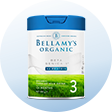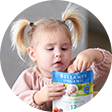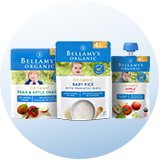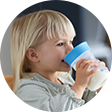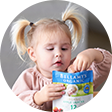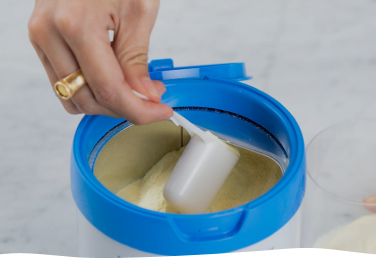Choosing the Right Infant Formula
The components of human milk are used as a reference in developing infant formula. However, infant formula will never replicate the variety of nutrients and active factors present in human milk, or the changing nature of breast milk over time.
Although research into the development of formulas is continuing, it is impossible that these products could ever duplicate the variety of nutrients present in breast milk.
If your baby is not breastfed however, infant formula is the only safe alternative to support your baby’s normal growth and development in the first 12 months of life.
There are many types and brands of formula available in Australia. They all comply with Australian regulations to ensure they contain enough nutrients for your baby’s growth and development. However, there are some differences between the types and amounts of ingredients used.
The National Health and Medical Research Council advises using an infant formula with lower protein levels as a higher protein content is associated with higher weight in the first two years of life. Human breast milk contains 1-1.1 grams of protein per 100 mL compared to the protein content in infant formulas now available in Australia in the range of 1.28–2.3 g/100 mL, so choosing a formula with a protein level that is closest to breast milk is recommended.
The Australia Infant Guidelines also notes the use of a particular formula by a hospital does not mean that formula is preferable to any other.
Types of Infant Formula
A cow’s milk-based formula is recommended for most infants, unless your baby cannot tolerate cow’s milk for medical, cultural or religious reasons and is preferred over formulas made from soybeans, goat’s milk or modified lactose formula.
Although there are many cow’s milk-based formulas available, there is little evidence that any one is superior for healthy babies.

Soy formula
Some babies can’t have dairy-based products because of allergies or intolerances. Soy-based formula will give your child all the nutrients she needs. But if you’re thinking of switching to a soy formula, talk to a doctor or dietitian first.
Soy is a source of protein that is inferior to cow’s milk, with a lower digestibility, and bioavailability. There have been some concerns about the effects of phytoestrogens in soy formula on babies, but soy formulas are considered safe to use if your baby needs one.
Soy-based formulas don’t prevent or reduce the risk of your child developing allergies and are not recommended for infants with food allergy during the first 6 months of life.
Goat’s milk-based formula
Compared to cow’s milk formulas, there have been fewer studies evaluating the safety and efficacy of goat’s milk formulas. Goat’s milk is not considered to have any role in preventing or treating allergic disease. Many infants who are allergic to cow’s milk are also allergic to goat’s milk and soy drinks.
Hydrolysed formulas
Hydrolysed formula is cow’s milk-based formula in which the milk proteins have been broken down into smaller components. This kind of formula includes partially hydrolysed formula (which is also called hypoallergenic formula) and extensively hydrolysed formula.
Evidence no longer supports the use of partially hydrolysed formulas for the prevention or treatment of cow’s milk protein allergy.
Whilst there’s no evidence that giving babies extensively hydrolysed infant formula prevents allergy problems from developing, if your baby has a diagnosed cow’s milk protein allergy and you aren’t breastfeeding, your doctor might recommend extensively hydrolysed infant formula and amino acid infant formula.
Specialised formulas
Specialised formulas are designed for infants with specific nutritional needs and should only be used, with medical and/or health professional supervision, for clinically diagnosed conditions.











